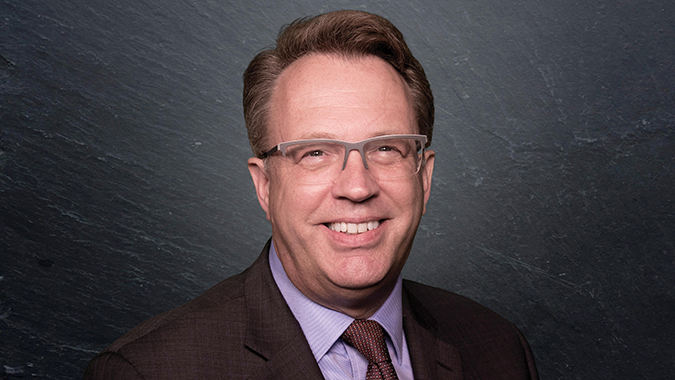All small businesses qualify for the Payment Protection Program. Under 500 employees or less than 500 employees in each location.
This includes:
- Sole proprietors - who report income and pay taxes on a Schedule C in your personal tax return.
- Independent contractors - who collect 1099-MISC forms.
- Gig economy workers - who take on-call jobs provided by companies such as Uber and Lyft.
The only stipulation is that your business was operational as of February 15, 2020. If you started your business after that date, you will not be eligible for this program.
What is the benefit of the Paycheck Protection Program?
This program is designed to help Americans stay employed and retain their salaries. As the name implies, this is a payroll-focused program. The payout you receive will be based on your average monthly payroll expense multiplied by 2.5. Under the PPP, your payroll expense can include your salary expenses which include commissions and sick pay, and health insurance premiums. It also includes amounts paid for employer paid State & Local taxes. Not Federal employer taxes.
The biggest perk of this program is that it can be almost entirely forgiven. You do not have to pay tax on any portion of the loan being forgiven (meaning the loan becomes tax-free grant). If you keep your payroll expenses consistent to what they were before the COVID-19 pandemic for a further eight weeks following the loan origination date, including the salary paid and the number of employees paid, you could be eligible to have those expenses forgiven from your loan amount, as well as certain other expenses such as rent and utilities and interest on your mortgage. You will apply to your lender after the 8 weeks for forgiveness and provide them with the evidence of these expenses.
Can I apply for the PPP and get Unemployment benefits?
No, you cannot receive both Unemployment Benefits and a PPP loan at the same time. You should consider the payout of each program to determine which is the best fit for you.
What if I don’t get paid through payroll?
If you own a business and do not give yourself a salary through a payroll, you are likely still eligible for the Paycheck Protection Program—with one exception. Businesses that are structured as C corporations or S corporations must use payroll to pay their owners, because the corporation is taxed separately from the individual. If you own a corporation and have not been paying yourself a salary through payroll, you will not have a salary covered through the PPP. This is because distributions or dividends from a corporation are not considered to be a salary or self-employment income.
Payments made to Independence contractors aren’t considered payroll and aren’t eligible under the PPP for the corporation paying them.
Sole proprietors and the PPP
If you run a business on your own, your business is a sole proprietorship— even if you haven’t formally let the IRS know. This means that your business income will be reported on a Schedule C within your personal tax return. As long as your business was operational prior to February 15 of this year, you can apply to the Paycheck Protection Program.
Your salary will be determined by your net profit. If you were operational in 2019 and have filed your 2019 taxes, this will be reported on line 31 of your Schedule C. If you have yet to file your 2019 taxes, this will be the Net Profit lineon your Income Statement.
Your monthly average payroll expense will be your annual net profit divided by 12. If your annual net profit is over $100,000, you may only claim up to $100,000 divided by 12.
Sole proprietors who are married, If you run a sole proprietorship informally with a spouse, you will only apply to the PPP once, and your spouse would not be considered to have a salary through the business unless he or she was paid as a contractor prior to February 15, 2020.
If you own more than one sole proprietorship, you may apply separately for each - but only if these sole proprietorships have separate EINs. The general rule of thumb is that you can apply separately for as many businesses you own that have separate identification numbers, or separate tax reportings. You may apply for the PPP once with your SSN as a sole proprietor, and then separately for any other businesses you own using their EINs.
Independent contractors and the PPP
If you work as an independent contractor, you are by default considered to be a sole proprietor in the eyes of the IRS. This means your freelance income gets reported annually on a Schedule C within your personal tax return. You will have a Schedule C even if you pick up odd jobs or do freelance work, and this Schedule is based on the 1099-MISC forms you collect from the companies or individuals who have hired you as a contractor.
Your salary is most easily determined by looking at the net profit listed on your Schedule C. If you have already filed your 2019 taxes, or prepared a 2019 return, this will be reported on line 31 of the Schedule C. If you have not filed your 2019 taxes but have accurate bookkeeping completed for all of 2019, again, this will be the Net Profit line on your Income Statement.
If you have neither of those things, your best estimation would come from adding all of your 1099-MISC income together. To find your monthly average, simply divide this amount by 12. If your annual net profit is over $100,000, you may only claim up to $100,000 divided by 12.
Proof of income
The lender will want to see all documents related to any wage, commission, income, or net earnings from self-employment that you have received. This means that you’ll need to collect any earnings reports, pay stubs, or invoices you have.
- Sole proprietorships will need to submit schedules from their 2019 tax return filed (or to be filed) showing income and expenses from the sole proprietorship.
- Independent contractors will need to submit schedules from their 2019 tax return filed (or to be filed) as well as Form 1099-MISC from 2019.
- All self-employed individuals will need to submit 2019 payroll tax filings reported to the Internal Revenue Service.
Expenses: Rent, mortgage, and utilities expense
The Paycheck Protection Program funding can cover your office lease, rent, or mortgage interest, provided that you had it before February 15 2020. Again, collect any paid invoices, statements, lease agreements, or cancelled checks that will help prove you had these expenses.
However, if you want to have your loan forgiven, you must spend 75% of the loan funds on payroll costs and the remaining 25% on rent, mortgage interest, and utilities. If you do not spend the loan on these expenses during the 8 weeks after loan origination, the portion not spent on these expenses will not be forgiven and will remain as a loan from your lender.
How do I apply?
You can apply for the Paycheck Protection Program through an approved lender.
Financial records you’ll need
You’ll need to provide payroll/bookkeeping records to prove your payroll expenses.
- Payroll processor records
- Payroll tax filings
- Form 1099-MISC records
- Income and expenses from a sole proprietorship
If you don’t have access to those kinds of documents, you can also provide bank records.
Do Owner Draws Count as Salary for the Paycheck Protection Program?
If you own a business, it’s pretty common to write yourself a check or transfer business funds into a personal account and consider this to be your salary. But in the context of the Paycheck Protection Program, this is considered an owner’s draw, not a salary.
If your business files taxes as an LLC (or sole proprietor)
As an LLC, your business does not pay taxes. Instead, the tax liability passes onto the business owners. This means that all of the business’ net profits pass directly through to the owners as earnings. LLC managing members are considered to be self-employed through the LLC, and therefore pay self-employment tax on these earnings. If you are the single owner, 100% of the net profit passes on to you as a tax liability. If you have multiple owners, the percentage of profit passed on to you as a tax liability will be equivalent to your ownership percentage. For example, if you own 40% of the company, 40% of the business profit passes through to you for taxation. This will most easily be found through your 2019 Tax Return on each member’s Schedule K-1.
Determining your salary for the PPP
Your payroll cost for the PPP will be the earnings that you are taxed on. As an owner of an LLC, this is the full amount of your net profit, not your owner draws. You may not have withdrawn as much money as your business made in profit, or you may have actually withdrawn more than your business made in profit, but your self-employment tax is based on your net profit. If this amount is negative and you don’t have employees, you should consider applying to the SBA Disaster Loan (EIDL) rather than the PPP.
If your business files taxes as a corporation
Filing as a corporation could mean that you file taxes as an S corporation or C corporation. Even if you are officially organized as an LLC, but file taxes as an S corp or C corp, this will apply to you.
If your business is taxed as a C corporation, the business itself pays taxes on its net profits, and you as an owner also pay taxes on your dividends related to that profit. The important thing to know here is that dividends are not considered a salary. If you are taking owner draws as a C corporation, you should be aware that this can have significant implications. The business’ profit does not pass through to you like it does with an LLC, so this money is considered to be the business’ money, and any owner draws you are taking should be considered a loan from the business that you will repay.
If your business is taxed as an S corporation, your owner draws are known as shareholder distributions. It’s important to realize that these distributions are non-taxable, which means there are some pretty strict requirements in place to prevent owners from taking advantage. As an owner of an S corp, you are required to pay yourself a reasonable salary through payroll, meaning that you are remitting payroll taxes on that amount.
Determining your salary for the PPP
When it comes to the PPP, your payroll costs will be limited to the wages that you are taxed on. As an owner of a corporation, this should only be the amount you have paid yourself by running through payroll. This will not be owner draws, distributions, or loans to shareholders, because none of those types of transactions are subject to payroll or self-employment tax.
If you are using a payroll provider, your salary will be included on an annual payroll report along with any W2 employees you may have. If you’ve been running payroll manually yourself or with the help of a CPA, so long as you have been remitting payroll taxes, you can use those salaries in your calculation to apply for the PPP.
The role of bookkeeping
The Paycheck Protection Program asks that you to self-report your payroll numbers (for yourself and your employees), or your net profit if you’re self-employed. The numbers you self-report are critical for getting the right loan amount.
Once you’ve been approved for a loan, it’s highly recommended that you keep accurate records for your business. You’ll need to prove you spent the funds on the appropriate categories in order to get the loan 100% forgiven.
Portions taken from blog by Heather Bant, April 8, 2020, Do Owner Draws Count as Salary for the Paycheck Protection Program? https://bench.co/blog/operations/owner-draws-ppp/




